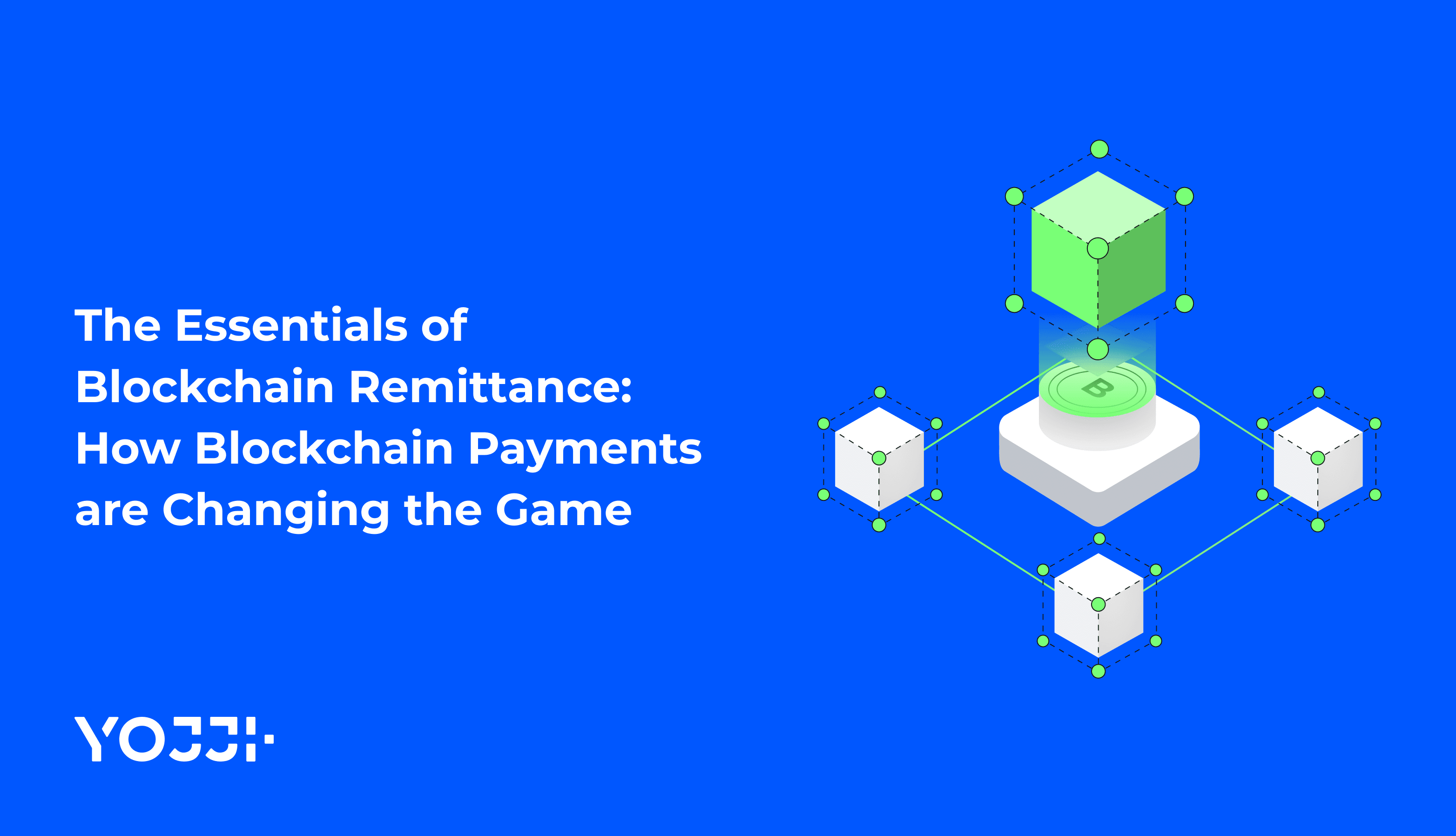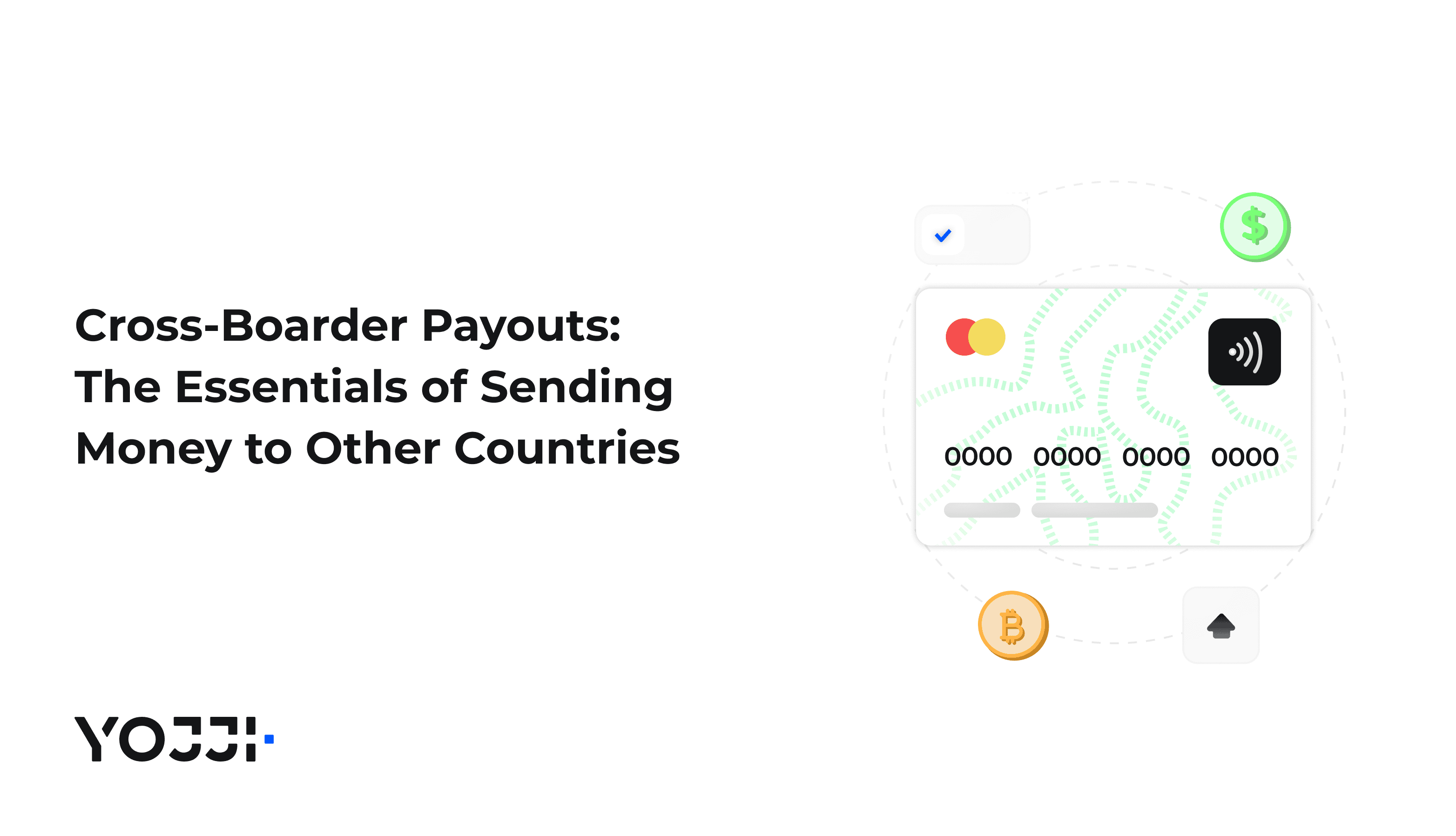In-App Purchases on Android & iOS

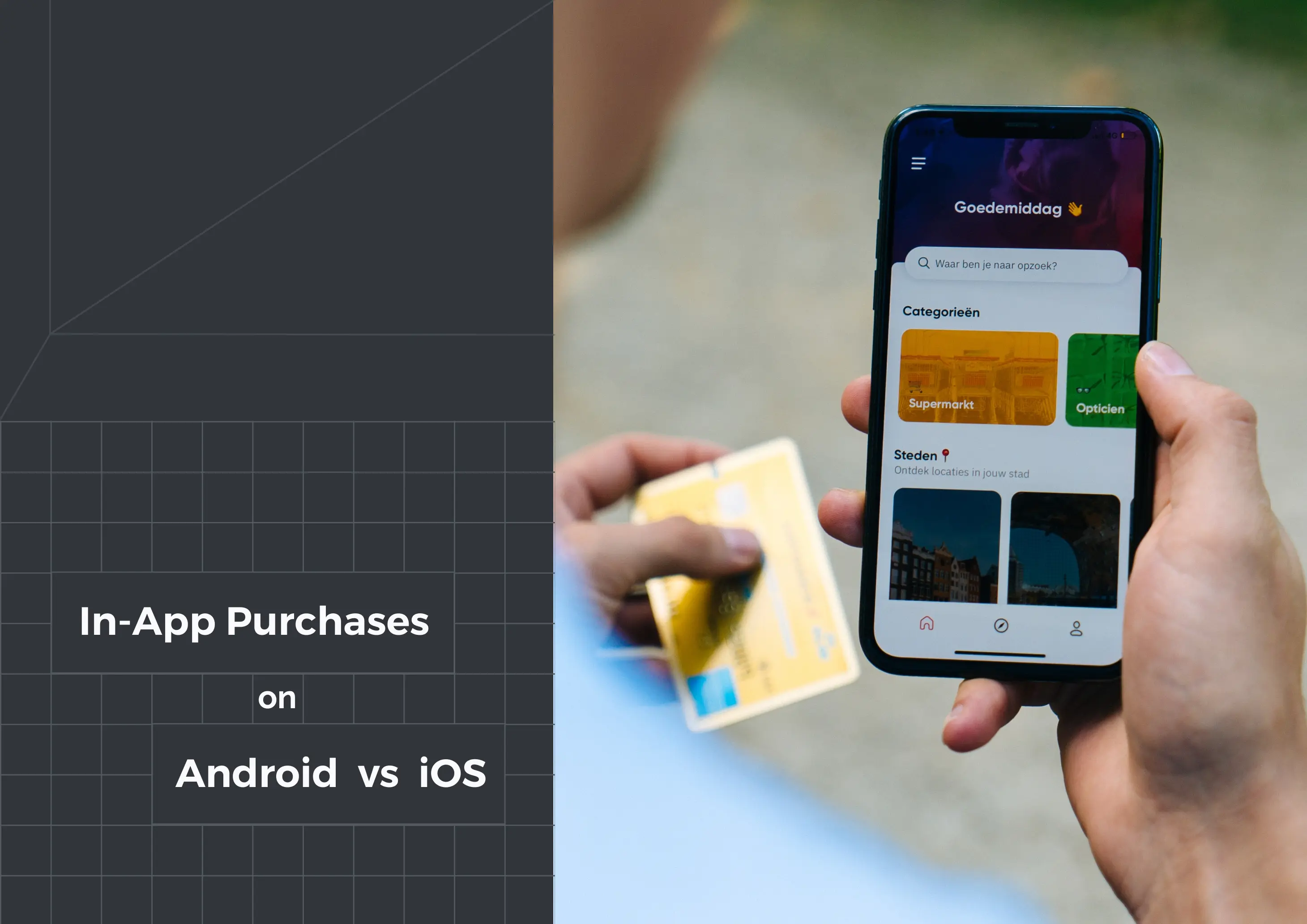
Mobile applications are taking the market over - it is claimed that users spent over 90% of their time utilizing applications. A mobile app can be a good source of income if you choose and implement a revenue monetization model correctly. App sales statistics show 48.2% of all mobile app earnings are thanks to in-app purchases. Paid app revenue comes second, with 37.8% of the total. These numbers will likely grow in the future. So app publishers may reach record income.
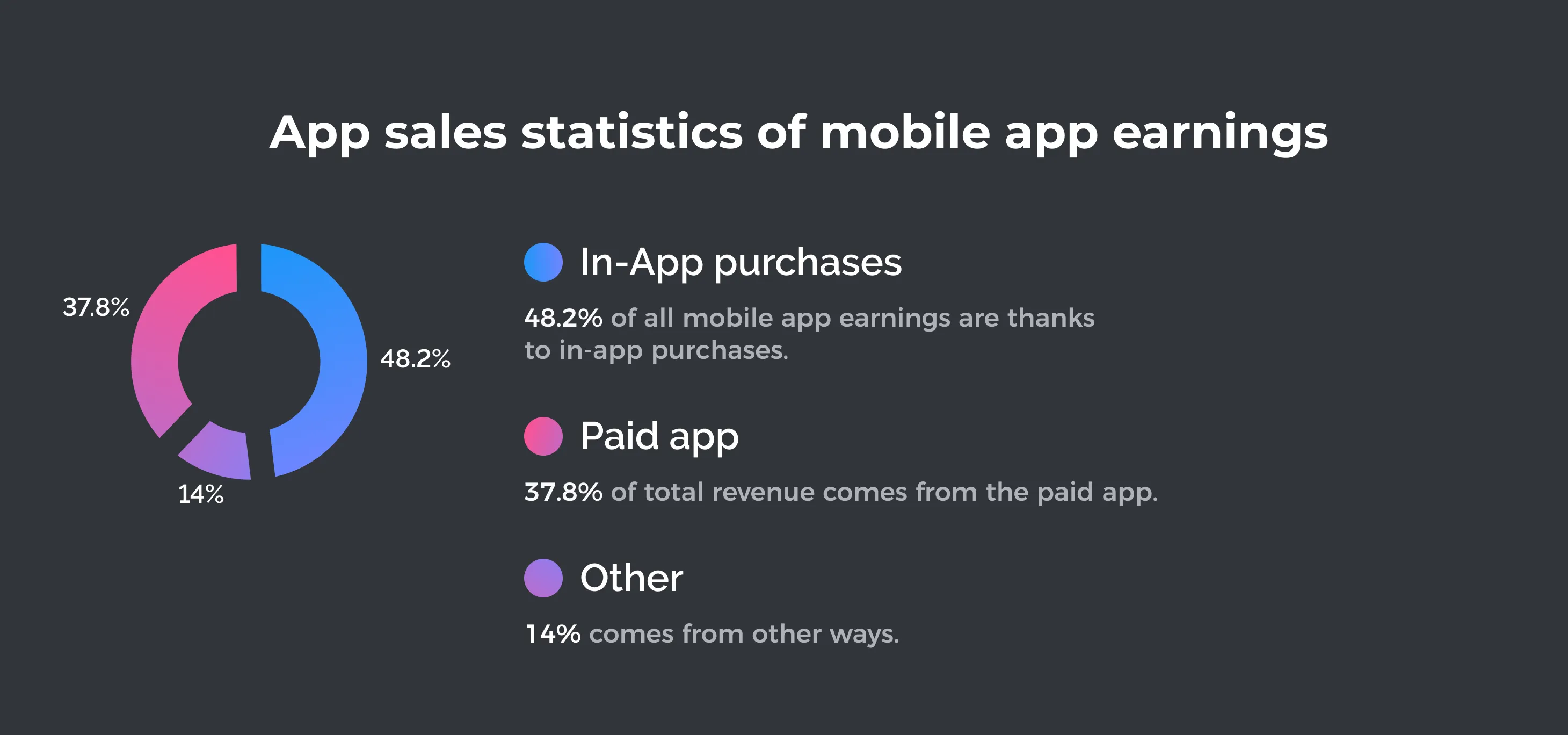
There are many app revenue sources, but in this post, we’ll talk about in-app purchases as one of the most effective monetization strategies.
What Does “In-App Purchases” Mean?
In-app purchases (IAP) allow you to sell real and virtual products, content, and additional functionality using an API that is integrated into the application. In most cases, these purchases are based on the freemium model. This model involves the release of a free product with a limited feature set (the free version offers unchanged options and has no time limit), and additional content (new functions, bonuses, and advanced features) is offered for an additional fee. The free version of the product is very useful for those users who want to try using the application and see if it meets their expectations. If clients like the idea and features of the app, they upgrade to the premium version.
There are three main types of in-app purchases:
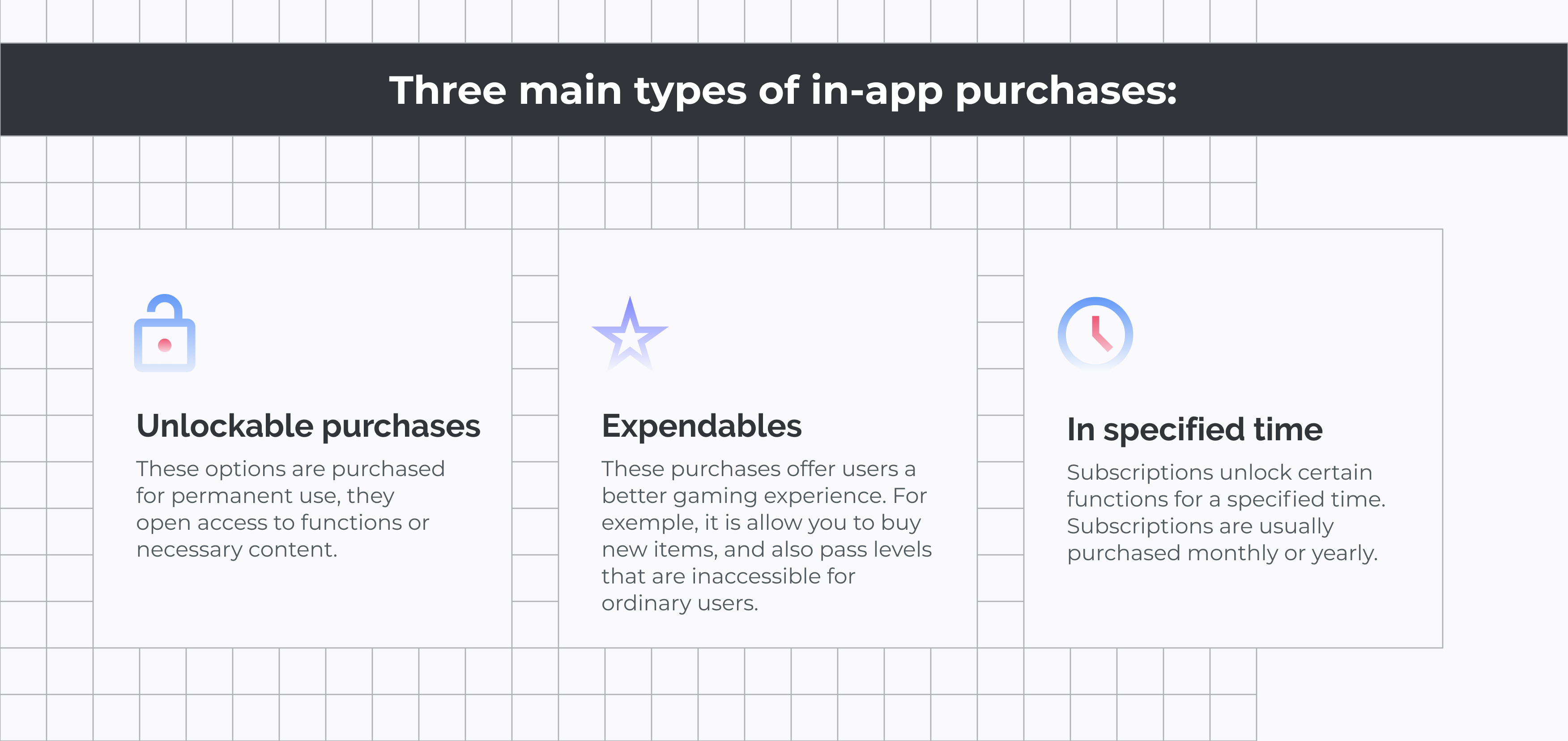
- Unlockable purchases. These options are purchased for permanent use, they open access to functions or necessary content. Once you buy them once, you don’t need to buy them again. For example, such features as disabling ads in the application and add-ons to games can be unlocked.
- Expendables. These purchases offer users a better gaming experience. For instance, in free games, you can buy additional bonuses or coins that improve the gameplay, allow you to buy new characters or items, and also pass levels that are inaccessible for ordinary users.
- Subscriptions unlock certain functions for a specified time. Subscriptions are usually purchased monthly or yearly.
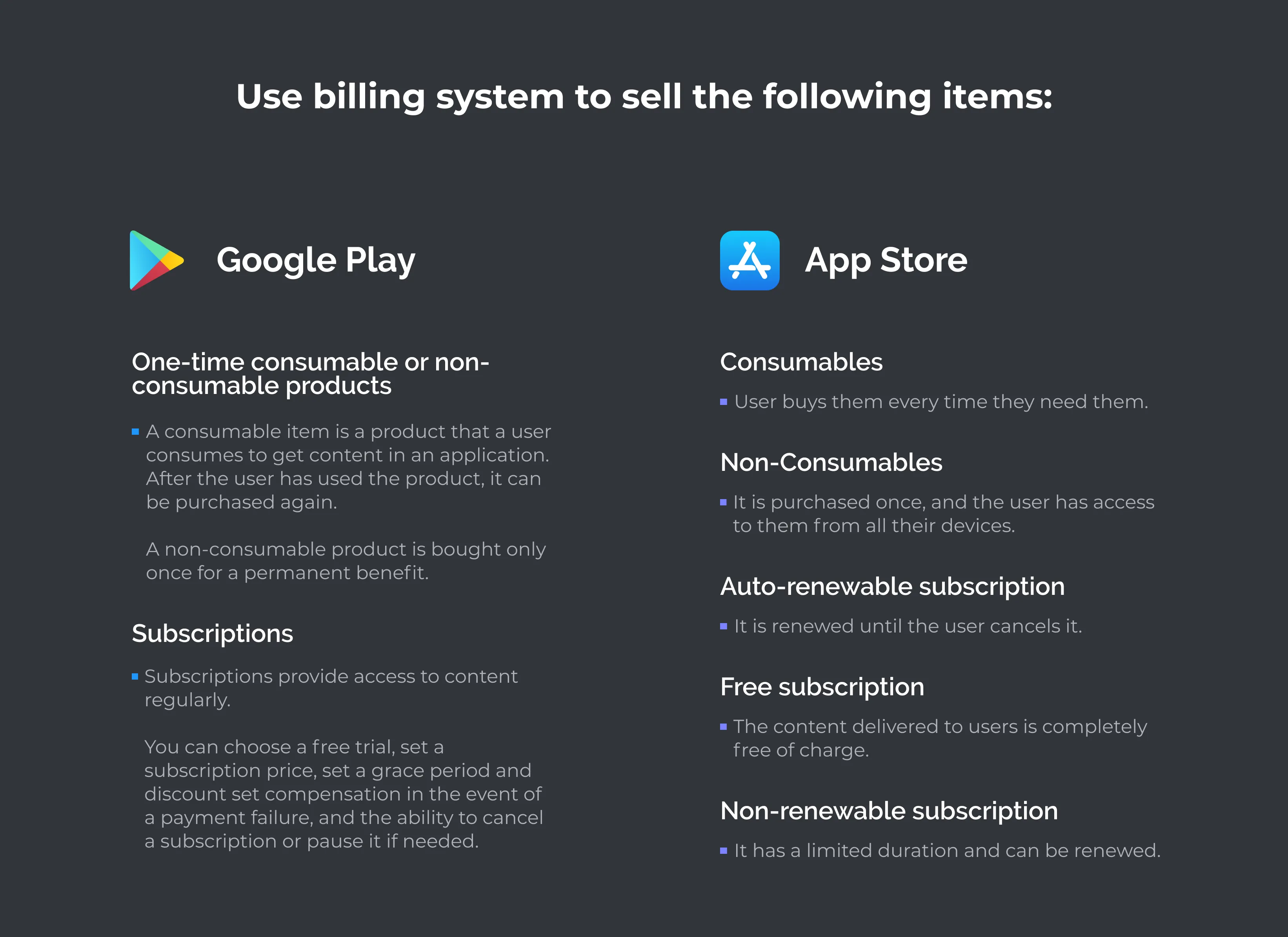
IAP on Google Play
The Android platform has a growing market share, so there are speculations that it will soon become the leading mobile application in the market. The billing implementation in the Android applications is managed by the Google Play In-App Billing Service. To set up the service, you must have a Google Wallet merchant account because Google Play manages the financial transactions in the app. You provide digital content and publish it to Google Play. Remember that you cannot publish the same product for multiple Android applications.
You can use the Google Play billing system to sell the following items:
- Basically, users can pick up one-time consumable or non-consumable products. A consumable item is a product that a user consumes to get content in an application. After the user has used the product, it can be purchased again. A non-consumable product is bought only once for a permanent benefit.
- Subscriptions provide access to content regularly. The Google Play Console provides great flexibility in terms of creating subscription products. You can choose a free trial, set a subscription price, set a grace period and discount set compensation in the event of a payment failure, and the ability to cancel a subscription or pause it if needed. Once the user has made an in-app purchase, there is no refund window. Customers will need to contact you directly, so duplicate all billing information on your server to prevent the application from being hacked.
IAP on App Store
To deliver an in-app shopping experience on iOS, you are required to create an in-app shopping store and embed it in the app. This store is integrated with App Store using the Store Kit platform. This platform provides secure payment processing, as well as provides a transaction notification function. After embedding the store, be sure to make purchases available for all the user’s devices.
There are five types of items that can be purchased in the iOS app.
-
Consumables
These items are easy to implement; the user buys them every time they need them. For example, players can purchase extra coins or extra lives in the game.
-
Non-Consumables
They are purchased once, and the user has access to them from all their devices.
-
Auto-renewable subscription
This subscription is renewed until the user cancels it. You will need to provide users with clear instructions on how to unsubscribe to avoid complaints.
-
Free subscription
The content delivered to users is completely free of charge, and customers can opt out of it if necessary.
-
Non-renewable subscription
The subscription has a limited duration and can be renewed by the user.
We recommend that you always test purchases before implementing them in an app. Apple provides this capability through iTunes Connect. You will roll out potential purchases to test the process. This testing can be performed at no additional cost.
After the store is enabled, you will need to implement the ability to restore purchases if the user uninstalls the application or uses it on another device. To do this, all purchases must be bonded to Apple ID. Keep in mind that Google and Apple both charge 30% of the price of the app you sell, as well as all in-app purchases.
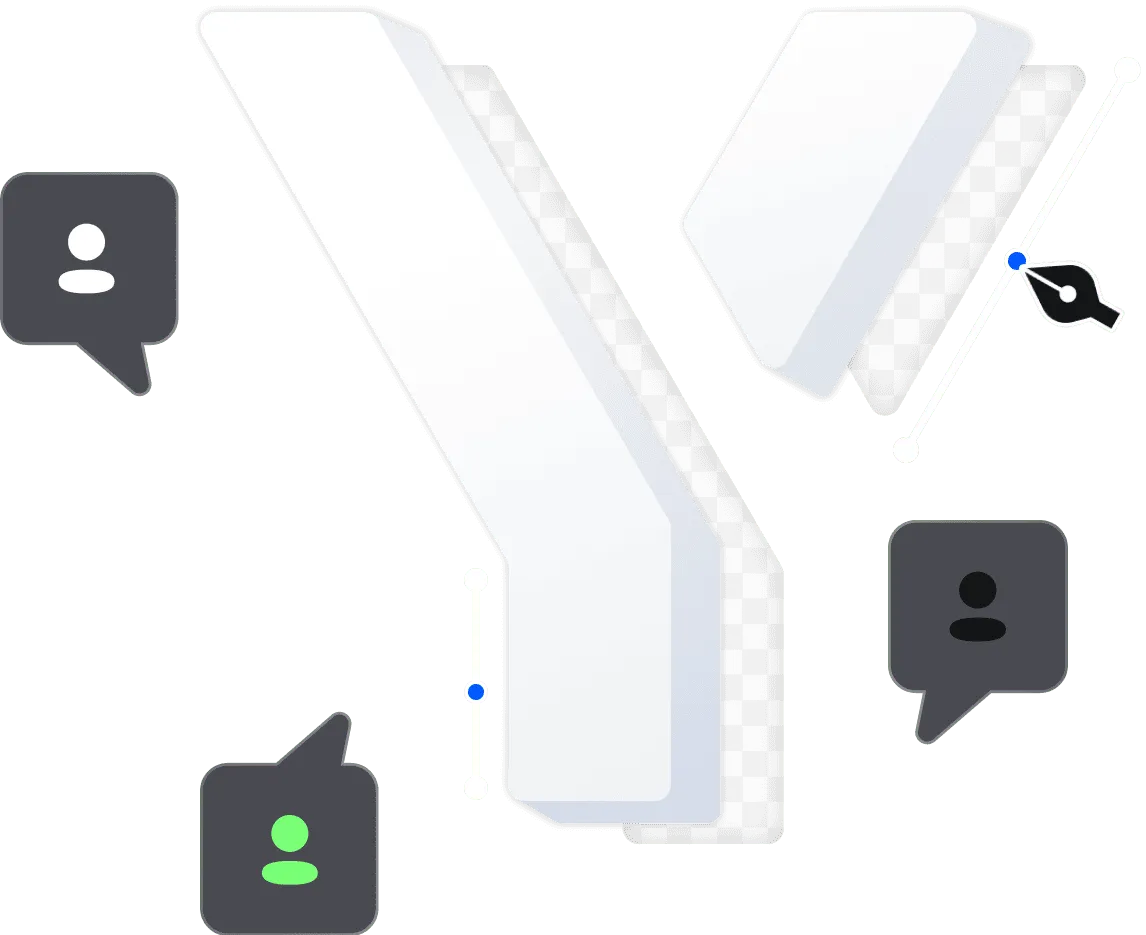
Injustice and Pop-ups
Many people have experienced unauthorized in-app purchases made by children, and Apple refunds customers if purchases were made by kids. For greater safety and comfort, several strategies have been implemented to prevent erratic purchases. So, after choosing a purchase, a window appears where a user will need to select “Ok” or go to the settings.
In the settings, users can set the password request function for in-app purchases or disable them altogether. Besides, buyers can select the “15-minute window” function, which means that within 15 minutes they can make purchases without re-entering the password. This feature will be very useful for people who make numerous purchases on a regular basis or for busy individuals who do not have a lot of time to choose and buy certain digital content.
As for Google, it provides detailed instructions on how to set up a mobile device to enter a password with every purchase.
Bottom Line
There are many strategies for incorporating in-app purchases into your application. Always carefully analyze the target audience and user behavior in order to change the approach if necessary and lay the foundation for long-term cooperation. As you may have noticed, the IAP integration is a hassle and complex process, so we recommend that you consult professionals who will help you create a cost-effective product. The Yojji team is always ready to provide you with comprehensive support at all stages of IAP implementation.
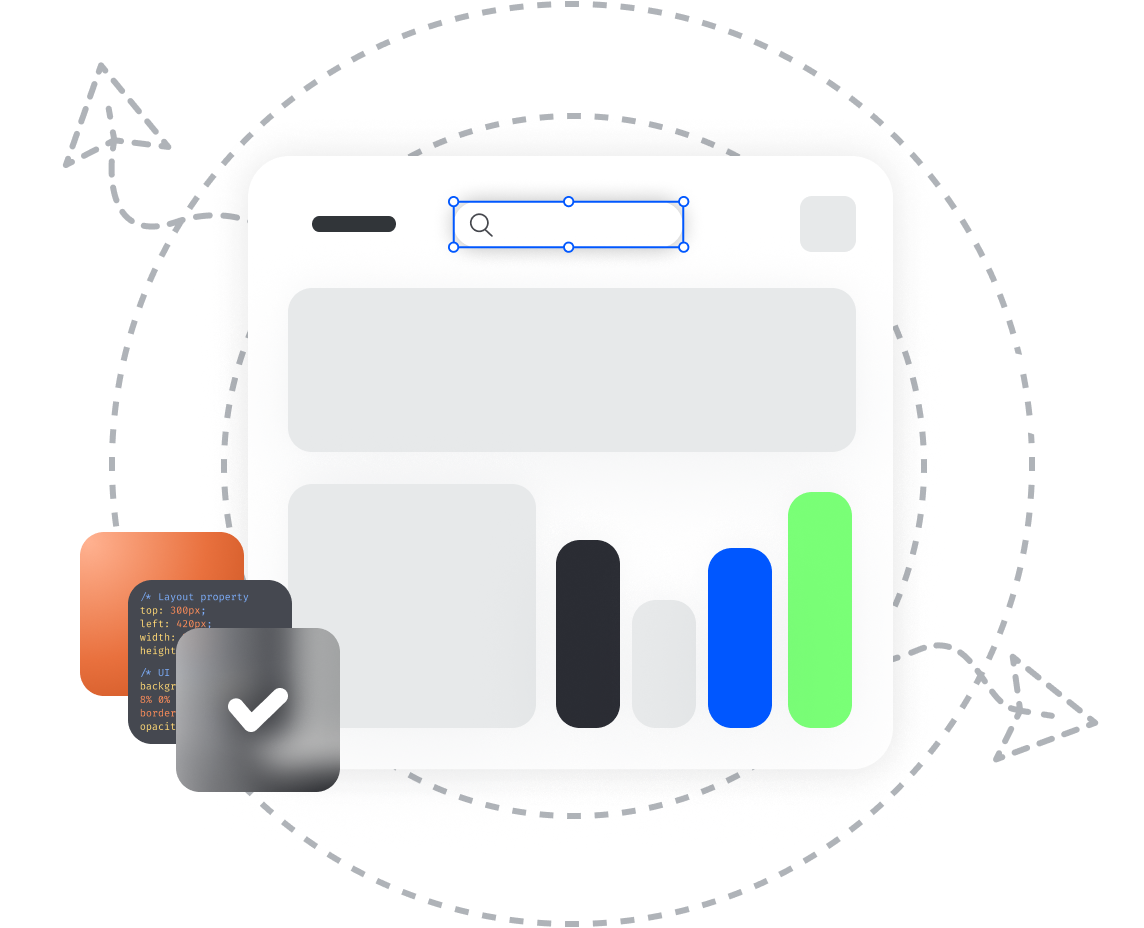
Yojji successfully delivered the project within schedule. They demonstrated excellent project management via weekly sprint demos and promptly made adjustments based on the client's feedback. Their responsiveness and collaborative attitude were key elements of their work.

5.0
Yojji was an instrumental part of the client’s team, working closely with them to achieve the product’s success. The team was very collaborative and timely, and their performance was amazing. Additionally, their resources were experienced, professional, and enjoyable to work with.

5.0
Yojii is impressive both in quality of development work as well as their commitment. Strong focus on delivery, highly technical personnel, flexible approach that allows for rapid development. Strong processes that allow for solid controls.

5.0
We’re very happy with the way that Yojji works, which is why we’ve spent so much money and engaged them for such a long time. We treat them as employees in regard to responsibilities and expectations, and they haven’t disappointed us.

5.0
As a company, we find Yojji to be excellent development partners - we cannot recommend them more highly and will be very happy to continue working with them in the future.

5.0
They are really nice people with excellent technical backgrounds.

5.0
We used Agile project management methodology and were in contact with the team and project manager daily.

5.0
They all had a super positive outlook and were dedicated to getting the work completed to a high standard.

5.0
Yojji has delivered an accessible product with thorough consideration for the client's requirements. Users have commented on the platform's user-friendliness and speed. Moreover, the team is easy to communicate with and provides frequent updates. Their development and design skills are impressive.

5.0



